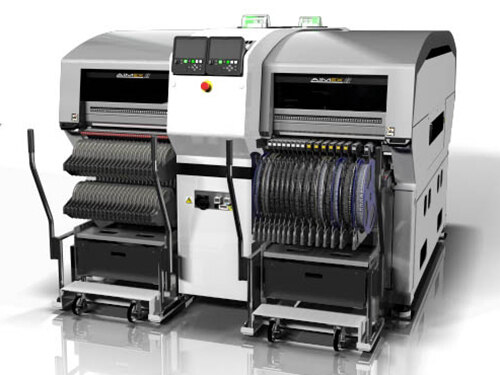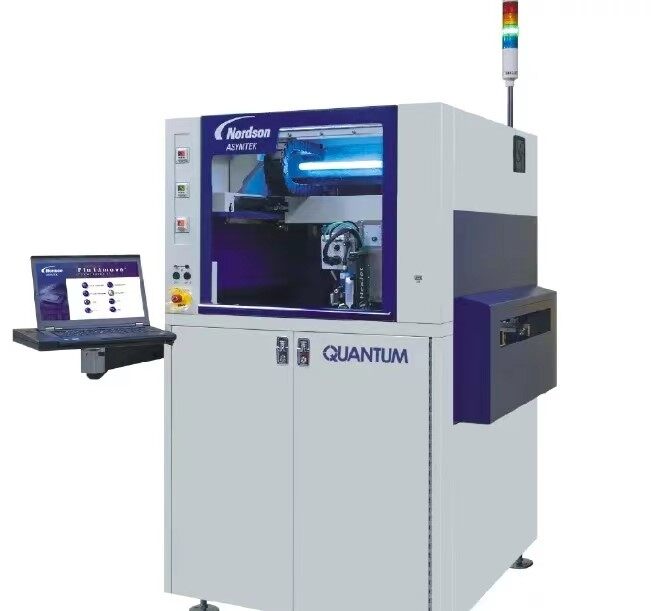Email format error
Email cannot be empty
Email already exists
6-20 characters(letters plus numbers only)
The password is inconsistent
Email format error
Email cannot be empty
Email does not exist
6-20 characters(letters plus numbers only)
The password is inconsistent


Flexible printed circuits (FPCs) have revolutionized the electronics industry, enabling the creation of compact and flexible electronic devices. Soldering plays a crucial role in assembling FPCs onto PCBs, ensuring reliable connections and optimal functionality. This guide aims to provide a comprehensive overview of the SMT (Surface Mount Technology) PCB assembly equipment used in soldering flexible printed circuits. Let's dive into the world of SMT machines and explore their capabilities.
1. Understanding SMT PCB Assembly Equipment:
1). Introduction to SMT Assembly:
Surface Mount Technology (SMT) is a method of assembling electronic components on a PCB. It involves placing components directly onto the PCB's surface, instead of through-hole mounting. SMT assembly equipment includes various machines designed to perform specific tasks in the assembly process.
2). SMT Pick and Place Machine:
A pick and place machine is a staple in any SMT assembly line. It is specifically designed for accurately placing surface mount components on the PCB. These machines come with vision systems that recognize component outlines and ensure precise placement.
Reflow soldering is the most common technique used to solder components on FPCs. A reflow soldering oven is responsible for heating the PCB to a specific temperature at which solder paste melts and creates a reliable connection. The oven's temperature profile is critical, as it determines the quality of solder joints.
4). Solder Paste Dispenser:
Solder paste dispensers are used to accurately and evenly apply solder paste on the PCB's solder pads. They ensure that the right amount of paste is applied, which is essential to achieve optimal solder joint quality.
5). Soldering Iron vs. Hot Air Rework Station:
While SMT machines perform the bulk of the assembly, certain situations may require manual soldering or rework. A soldering iron and a hot air rework station are commonly used tools for hand soldering or repairing components on FPCs. These tools provide the necessary heat to melt solder and make reliable connections.
2. Best Practices for Soldering Flexible Printed Circuits:
1). Preparing the FPC:
Before soldering the FPC onto a PCB, it's essential to prepare the circuit board properly. This includes cleaning the surface and removing any contaminants that could hinder soldering.
2). Applying Solder Paste:
The key to successfully soldering FPCs is the controlled application of solder paste. Using a solder paste dispenser, apply smaller amounts of paste on the solder pads, ensuring even distribution. This facilitates accurate placement of components and prevents excess solder from spreading.
3). Reflow Soldering Process:
Place the FPC with the applied components on a reflow soldering oven conveyor belt, which will gradually heat it, melting the solder paste and forming reliable joints. Strictly follow the reflow oven's temperature profile provided by the solder paste manufacturer to achieve optimal soldering results.
4). Rework Procedures:
In cases where components need to be repaired or replaced, manual soldering or hot air rework stations can be utilized. The hot air rework station is particularly suited for de-soldering and re-soldering tightly spaced components on FPCs without damaging the flexible circuitry.
3. Advancements in SMT PCB Assembly Equipment:
1). Automated Optical Inspection (AOI) System:
AOI systems employ advanced camera technology to inspect the quality of solder joints, component placement accuracy, and the overall integrity of the assembled FPC. This automated inspection ensures that any faulty connections or defects are detected and corrected efficiently.
2). X-ray Inspection:
X-ray inspection is used to identify potential hidden defects that may not be easily detectable during visual inspection. This non-destructive testing method allows operators to check for solder joint integrity and potential manufacturing defects within the FPC.

Soldering Flexible Printed Circuits Ensures Accurate Component Placement and Reliable Solder Connections
Soldering flexible printed circuits requires specialized SMT PCB assembly equipment to ensure accurate component placement and reliable solder connections. By utilizing pick and place machines, reflow soldering ovens, solder paste dispensers, and manual soldering tools, we can achieve high-quality assemblies. Advancements like AOI systems and X-ray inspection further enhance the quality control process. By following best practices and employing these advanced machines, the reliable and efficient manufacturing of flexible electronic devices can be achieved.